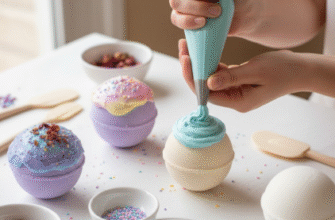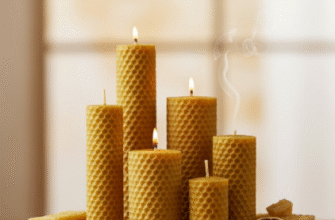Candles do more than just light up a room; they create an atmosphere, evoke memories, and can turn a simple space into a cozy sanctuary. But not all candles are created equal. Stepping into a store or browsing online reveals a dizzying array of options, from budget buys to luxury offerings. So, how do you sift through the choices and find a candle that burns beautifully, smells divine, and lasts a decent amount of time? It comes down to understanding the markers of quality craftsmanship.
Decoding the Wax: The Foundation of a Good Candle
The type of wax used is arguably the most significant factor in a candle’s performance and quality. While manufacturers might keep their exact blends proprietary, knowing the basics about common waxes helps immensely.
Paraffin Wax
This is the most traditional and widely used candle wax, a byproduct of petroleum refining. High-quality, highly refined food-grade paraffin can make for excellent candles. It holds fragrance well, offers vibrant color possibilities, and is generally affordable. However, lower-grade paraffin can produce more soot and may contain impurities. Don’t dismiss paraffin outright, but be aware that quality varies greatly. A well-made paraffin candle from a reputable brand can outperform a poorly made natural wax candle.
Soy Wax
Hugely popular in recent years, soy wax is derived from soybean oil. It’s a natural, renewable resource, which appeals to eco-conscious consumers. Soy wax typically burns slower and cooler than paraffin, potentially leading to a longer-lasting candle. It generally produces less soot. However, its scent throw (how much fragrance it releases when burning) can sometimes be more subtle than paraffin, especially in larger spaces. Some soy candles might have rougher tops after burning, which is purely aesthetic.
Beeswax
The oldest known candle wax, beeswax is produced naturally by bees. It has a subtle, sweet honey scent on its own and requires minimal processing. Beeswax candles are known for their long burn times and bright, warm-toned flame. They are also natural ionizers, purported to help purify the air. Beeswax is typically the most expensive wax, reflecting its natural origin and beneficial properties. Quality is generally high, but ensure it’s 100% beeswax if that’s what you’re paying for, as blends exist.
Coconut Wax
A relative newcomer, coconut wax is often blended with other waxes (like soy or apricot wax) to create candles with excellent scent throw and a clean, even burn. It’s derived from hydrogenated coconut oil, making it another natural option. Coconut wax blends often provide the best of multiple worlds – good burn time, strong fragrance release, and a cleaner burn profile. These tend to be positioned at a higher price point.
Blends
Many high-quality candles use proprietary blends (e.g., soy-coconut, paraffin-soy) to achieve specific characteristics like optimal scent throw, ideal burn time, and smooth appearance. A blend isn’t inherently better or worse; its quality depends on the waxes used and the maker’s skill.
What to look for: Transparency is key. High-quality brands are usually upfront about the primary wax used (e.g., “soy wax blend,” “100% beeswax,” “food-grade paraffin”). Be wary of candles with no wax information listed – they are often made with cheaper, lower-grade paraffin.
The Wick: More Important Than You Think
The wick is the engine of the candle. Its material, thickness, and placement are crucial for a clean, safe, and efficient burn. A poorly chosen or positioned wick can lead to a host of problems.
Wick Material
Most quality candles use wicks made from braided cotton or cotton with paper filaments woven in. Some employ wood wicks, which offer a distinct crackling sound reminiscent of a fireplace. Avoid wicks with metal cores, especially lead (which was banned in many countries years ago but might still appear in very cheap imports). A good wick should be clean-looking and appropriately sized for the candle’s diameter.
Wick Size and Centering
The wick needs to be the right thickness for the candle’s diameter and wax type. Too thin, and it won’t generate enough heat to melt the wax across the entire surface, leading to tunneling (where the wick burns straight down the center, leaving unused wax around the edges). Too thick, and the flame will be too large, consuming wax too quickly, potentially creating excessive soot and smoke, and making the container dangerously hot. The wick should also be perfectly centered and stand straight. An off-center wick causes uneven burning and can be a safety hazard if the flame gets too close to the container edge.
What to look for: Check that the wick is centered visually. It should look proportional to the candle size. High-quality brands pay close attention to wick science.
Always trim your wick before each burn, typically to about 1/4 inch (around 6mm). A trimmed wick ensures a cleaner, steadier flame, prevents excessive soot (black smoke), and helps the candle burn more evenly. This simple step significantly impacts candle performance and safety.
Fragrance: The Soul of the Scented Candle
For many, the scent is the main reason for buying a candle. Quality here relates to both the type of fragrance used and its concentration.
Fragrance Oils vs. Essential Oils
Most scented candles use fragrance oils, which are synthetic compounds specifically designed for stability and performance in wax. They offer a vast range of complex and consistent scents. Essential oils are natural plant extracts. While some candles use essential oils, they are often more expensive, more volatile (can lose scent faster), and may not always perform as well when heated in wax. Some high-end candles use a blend of both. The quality concern isn’t strictly synthetic vs. natural, but the grade of the oils used. Cheap fragrance oils can smell artificial, overpowering, or cause headaches.
Scent Load and Throw
Scent load refers to the percentage of fragrance oil mixed into the wax. Higher-quality candles typically have a higher scent load (within safe limits, usually 6-12%). “Cold throw” is the scent you smell when the candle is unlit. “Hot throw” is the fragrance released while burning. A quality candle should have a pleasant cold throw and a robust hot throw that fills the room appropriately without being cloying. Poor quality candles might smell strong unlit but barely release any scent when burning, or vice-versa.
What to look for: Smell the candle before buying (cold throw). Does it smell authentic and appealing, or cheap and chemical-like? Read descriptions for scent notes – quality brands often provide detailed top, middle, and base notes. Look for reviews mentioning the hot throw.
Appearance, Construction, and Burn Performance
Beyond the core components, the overall look, feel, and how the candle actually burns are vital indicators.
Visual Inspection
A high-quality candle generally has a smooth, uniform wax surface, free from excessive air bubbles, cracks, or mottling (unless it’s a deliberate rustic style). The container (if any) should feel sturdy and appropriate for the candle size. Labels should be well-applied and informative. Does it look like care went into its making?
The First Burn is Critical
The first time you light a candle, allow it to burn long enough for the melted wax pool to reach the entire edge of the container. This usually takes about 1 hour for every inch of the candle’s diameter. This sets the candle’s “memory” and helps prevent tunneling on subsequent burns. A quality candle should achieve a full melt pool relatively easily on the first burn.
Establishing a full melt pool on the very first burn is crucial. This prevents the candle from tunneling down the middle in the future. Ensure the entire top surface liquefies before extinguishing the flame, especially the first time.
Observing the Burn
During subsequent burns (after trimming the wick!), watch for these signs of quality:
- Even Melt Pool: The wax melts evenly across the surface.
- Steady Flame: The flame should be calm and consistent, not wildly flickering, sputtering, or producing visible black smoke (a tiny bit when extinguishing is normal).
- Minimal Soot: Little to no black residue should accumulate on the inside of the container.
- Good Hot Throw: The fragrance should be noticeable and pleasant throughout the burn.
- No Self-Extinguishing: The wick shouldn’t drown in the melt pool.
Problems like excessive smoking, tunneling despite a proper first burn, or a wick that “mushrooms” (forms a carbon cap) often indicate lower quality components or construction.
Price as an Indicator (Usually)
While not an absolute guarantee, price often correlates with quality. Better ingredients (natural waxes, high-grade fragrance oils) and careful craftsmanship cost more. Extremely cheap candles often cut corners on wax purity, fragrance quality, and wick testing. Expect to pay a bit more for a candle that uses premium materials and is designed to burn well. However, don’t assume the most expensive candle is always the best – brand reputation and specific product reviews are also important.
Ultimately, identifying a high-quality candle involves using your senses and a bit of knowledge. Look at the wax type, inspect the wick, evaluate the fragrance (both cold and potentially through reviews for hot throw), check the overall construction, and pay attention to how it burns. A little scrutiny goes a long way in ensuring you get a candle that truly enhances your space and provides hours of enjoyment.








